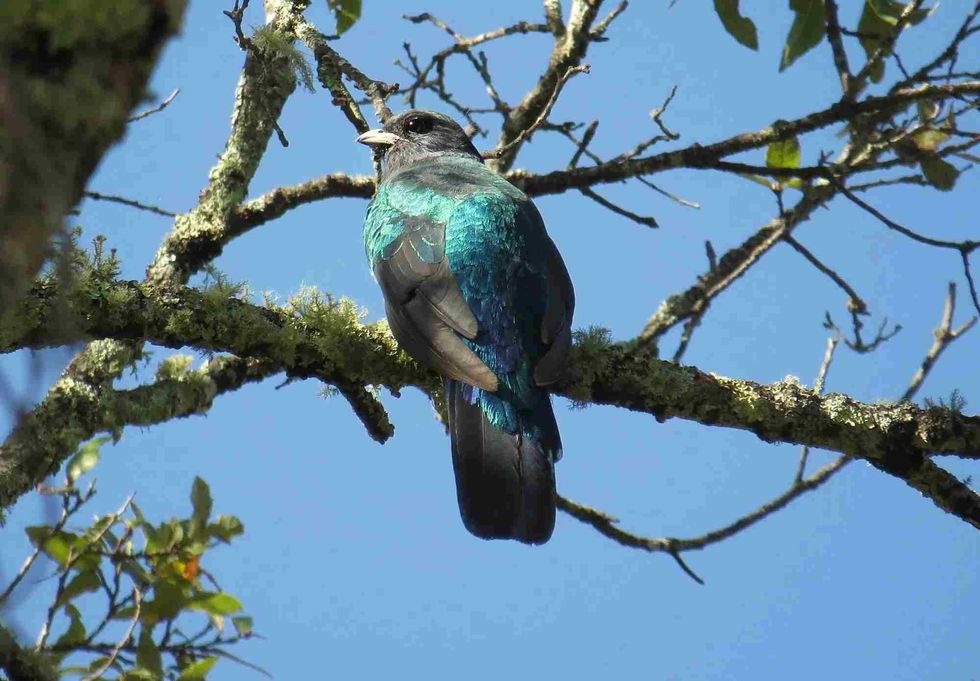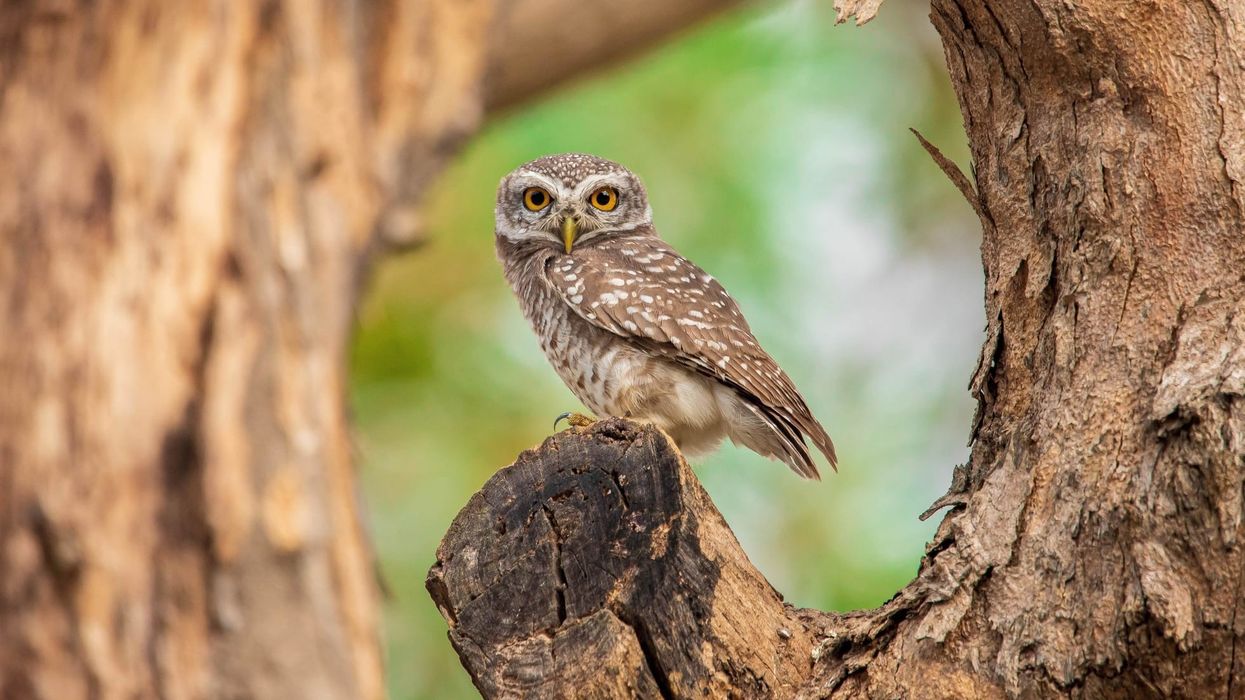Eared quetzals are known to be rare birds with a limited range. They belong to the Trogonidae family.
Due to being a member of this family, eared quetzals were previously named eared trogons. They are mostly found in the forests of Arizona and Mexico. Although this bird was previously an exclusive resident of Mexico, over the years, it has also become a resident of Arizona, Sonora, western Michoacán, south-western New Mexico, and the Madrean Sky Islands.
Recent breeding activities of eared quetzals were noticed in Arizona. However, the total range of this breeding population in Arizona has not yet been recorded. Other than forests in Arizona, Mexico, and other areas, they are also found near habitats that include canyons.
They are also found along rivers or near water habitats. To know more about these birds, keep reading these fun and interesting facts about the beautiful bird.
If this article piques your interest, be sure to check out facts on the quetzal and the resplendent quetzal.
Eared Quetzal Interesting Facts
What type of animal is an eared quetzal?
The eared quetzal (Euptilotis neoxenus) is a type of bird.
What class of animal does an eared quetzal belong to?
The eared quetzal (Euptilotis neoxenus) belongs to the class Aves in which all birds are included.
How many eared quetzals are there in the world?
The exact population of the eared quetzal (Euptilotis neoxenus) remains unknown. This bird may be classified under the category of rare birds for its limited number of sightings over the years. However, no data indicate a decrease in the population of these birds. Their population is said to be stable at present.
Where does a eared quetzal live?
Eared quetzals are native to Mexico. Within the state of Mexico, these birds can be found in the northwestern part, such as the Sierra Madre Occidental.
Although this species was previously endemic to Mexico, it can now be seen in parts of the world other than Mexico. Recently, these birds were spotted in Arizona, where they breed. These birds can also be found in Michoacán, northern parts of Sonora, and New Mexico.
What is a eared quetzal's habitat?
This species that originally hails from Mexico prefers to reside in habitats or mountains filled with pine trees. As a result, they can be found mostly in pine-oak woodlands, highland pine, and evergreen forests covered in pine trees.
These birds inhabit areas situated at an altitude of 5577.4-9843.5 ft (1700-3000 m) above sea level, making them a resident of mountains. Apart from mountains, birds of this species can also be found residing in canyons and along the banks of rivers or streams.
Who do eared quetzals live with?
Eared quetzals are usually birds of a solitary nature, with the only exception being during the breeding season. The species can be found in pairs around this season. During the breeding season, birds who do not participate in breeding usually form flocks.
How long does an eared quetzal live?
Birds belonging to the quetzal species generally have a lifespan of 20-25 years, unlike other birds like house finches.
How do they reproduce?
The eared quetzal is a monogamous bird meaning they mate with only one individual. The breeding season of this species begins in June to August and comes to an end in October. Both males and females give out whistles to attract the opposite sex. Nesting begins once a pair forms an eared trogon's nest inside tree cavities.
Nests are usually reused in consequent breeding seasons. Moreover, the average clutch size ranges between two to four eggs. These eggs are greenish-blue or blue in color.
What is their conservation status?
As per the International Union for Conservation of Nature (IUCN) Red List, the eared quetzal or eared trogon is a species of Least Concern. This means that there is no immediate threat to the population of this species at present.
Eared Quetzal Fun Facts
What do eared quetzals look like?
Quetzals have a very colorful appearance. This bird has a red belly, while the rest of its plumage is a dark blue or iridescent green in color. Their back is typically glossy green, while their central tail feathers are dark blue. The feathers on the outer side of their tail are white in color, while the base is black.
Their head and neck are a pale gray. Like the head, the chest is also gray in color. Both the head and the chest can sometimes show hints of green.
How cute are they?
The eared trogon is a very cute bird. They are very colorful and have an adorable and fluffy appearance.
How do they communicate?
The eared trogon bird communicates primarily through the medium of sound. They produce a number of different calls.
This species has a song that is characterized by whistles that are usually one or two syllables long. The song begins with a slow pace and gradually extends to a higher pitch and a length of three syllables. A song consists of 8-15 whistle calls on average but may extend for up to 24 whistles.
The whistle calls of this trogon sound like 'eep-eep' or 'whee wheer-i.' Such a note is generally given out during mating or while claiming territory.
How big is a eared quetzal?
Eared trogons usually measure about 13–14.2 in (33–36 cm) in length. They are two times the size of palm warblers.
How fast can an eared quetzal fly?
The exact speed at which an eared trogon flies is not known. Trogons or quetzals are usually fast fliers.
How much does an eared quetzal weigh?
On average, eared trogons weigh approximately 7.1–7.9 oz (200–225g).
What are the male and female names of the species?
When it comes to the eared trogon, the male bird is called a cock while the female bird is called a hen.
What would you call a baby eared quetzal?
Baby-eared quetzals are called chicks.
What do they eat?
Eared trogons or eared quetzals are omnivorous birds. They feed on small vertebrates, invertebrates, and insects.
Insects and invertebrates they feed on include caterpillars, katydids, moths, and cicadas, among others. Apart from insects, these birds also prey on reptiles like small lizards found in forests or canyons. They also eat fruits, the fruit of madrone trees being one of their favorites.
Are they dangerous?
Eared quetzals do not have any history of violence or being a threat to humanity.
Would they make a good pet?
Yes, eared quetzals make great pets. This can be linked to their beautiful appearance coupled with their docile nature. However, keeping them as pets results in a decrease in their numbers. Moreover, quetzals, in general, do not do too well in captivity.
Did you know...
Quetzals are known for their historical significance. In Aztec and Mayan culture, the feathers of this bird were worn during celebrations and special occasions. This practice was prevalent among royals and priests of ancient times as well.
Natural predators that eat the quetzal include the gray-bellied squirrel, the ornate hawk-eagle, the kinkajou, and the red-bellied squirrel.
How many species of quetzal are there?
There are six known species of quetzal. They are the resplendent quetzal, the pavonine quetzal, the golden-headed quetzal, the white-tipped quetzal, the crested quetzal, and the eared quetzal.
Why is it called eared quetzal?
The eared quetzal is named so because of the placement of a bunch of feathers beside their eye in the post-ocular region. This makes them look like they have ears.
Here at Kidadl, we have carefully created lots of interesting family-friendly animal facts for everyone to discover! Learn more about some other birds from our nightingale facts and keel-billed toucan facts pages.
You can even occupy yourself at home by coloring in one of our free printable bird coloring pages.









